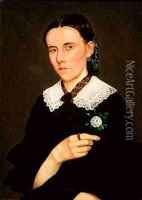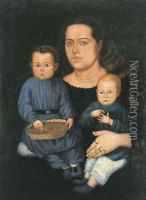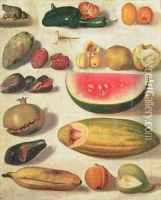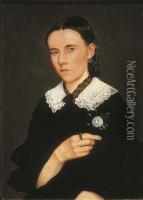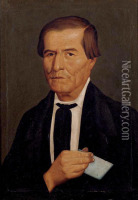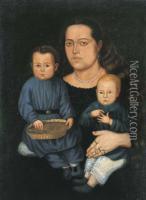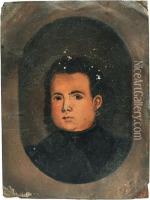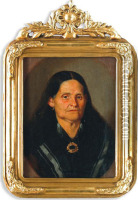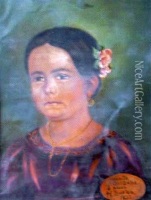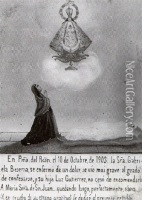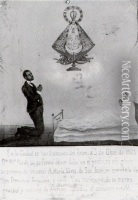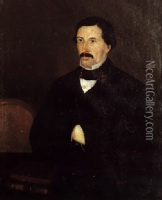Hermenegildo Bustos Paintings
Hermenegildo Bustos was a Mexican painter known for his portraits, still lifes, and religious paintings, as well as for his work as a municipal president in his hometown. Born on April 13, 1832, in Purísima del Rincón, Guanajuato, Mexico, Bustos was largely a self-taught artist. Despite his limited formal education and artistic training, he became one of the most important and recognized folk artists in Mexico.
His work is characterized by its directness, honesty, and detailed observation, capturing the essence of Mexican life in the late 19th century. Bustos was particularly skilled at portraiture; he painted ordinary people from his community, revealing their personalities and social conditions. His portraits are notable for their realism and lack of idealization. This focus on everyday subjects and the local community became a significant aspect of his legacy, offering a window into the life of the Mexican lower and middle classes during that era.
Apart from portraiture, Hermenegildo Bustos also painted still lifes, imbuing them with a sense of Mexican identity through the use of local fruits and flowers. His religious works, which included traditional themes, were also sought after by local churches and individuals. Despite his local focus, Bustos did gain some recognition beyond his hometown during his lifetime.
Bustos was also an active member of his community, serving as the municipal president of Purísima del Rincón. His dual role as a political figure and an artist underlines the respect he garnered within his community. Hermenegildo Bustos passed away on November 28, 1907, in his birthplace. After his death, his work gained broader recognition and has been celebrated as an important part of Mexico's cultural heritage. Today, Bustos is remembered not only for his artistic contributions but also for his engagement in the social and political life of his hometown.
